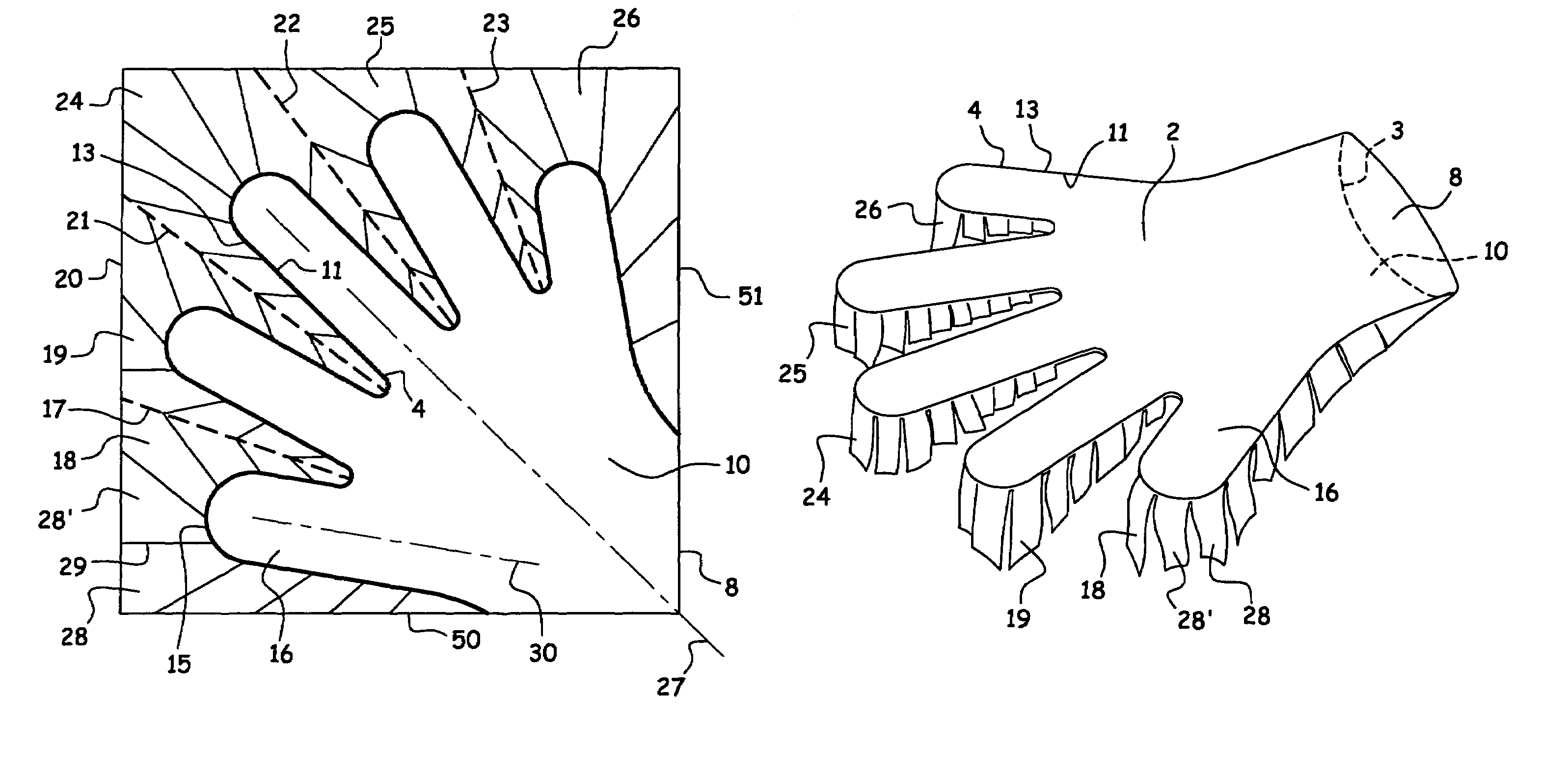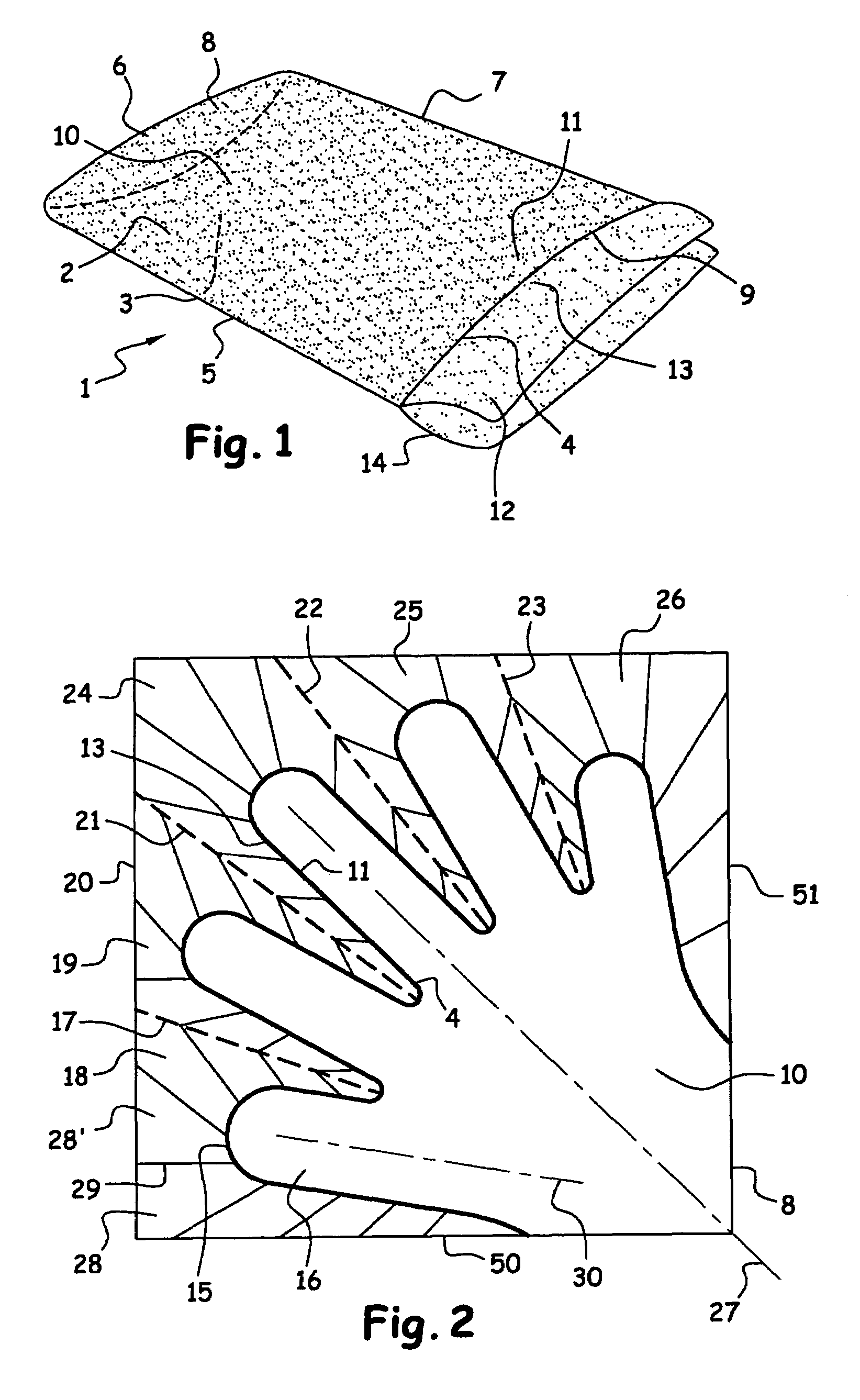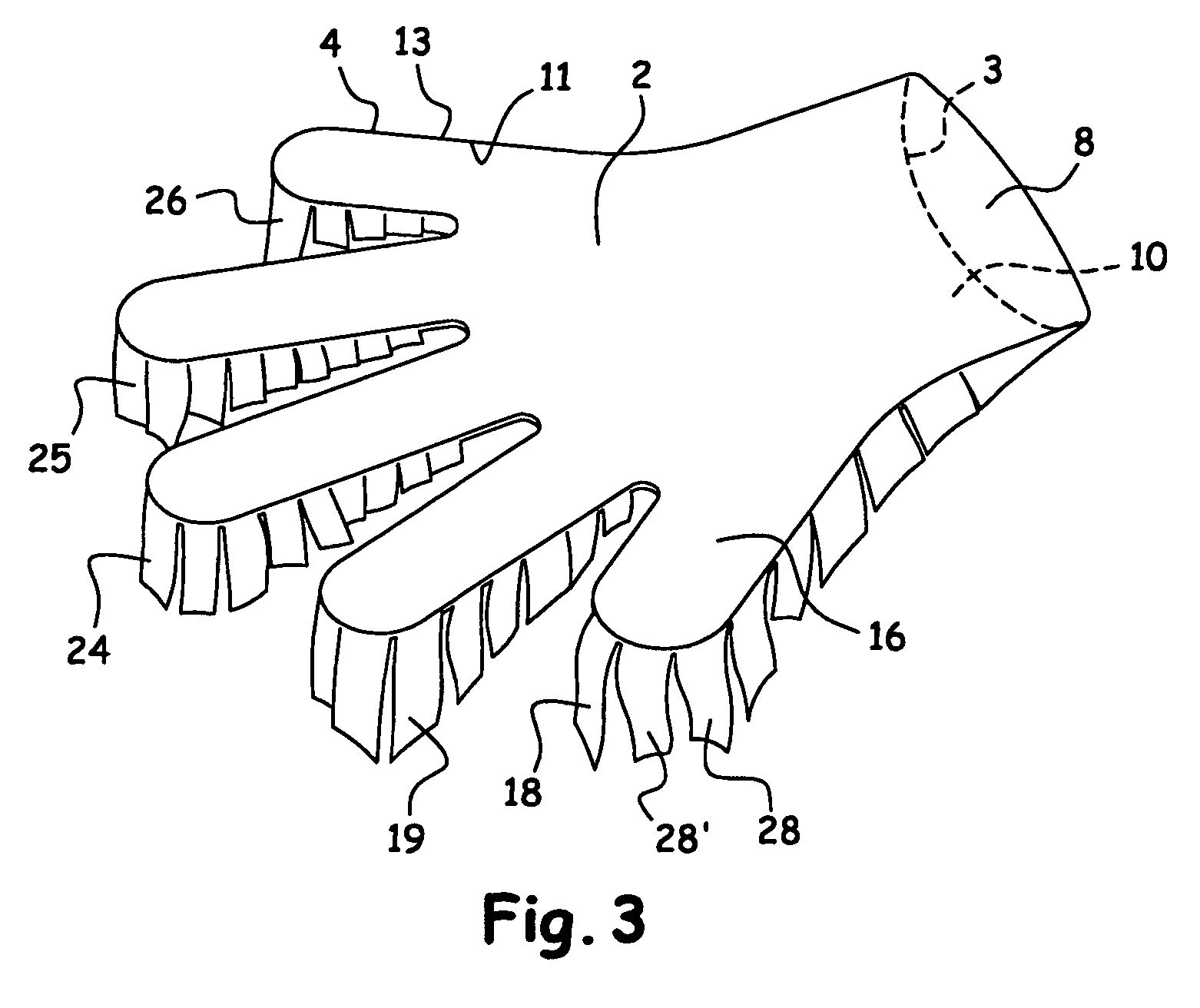Applicator structure in the form of a glove
a technology of application structure and glove, which is applied in the field of application structure in the form of glove, can solve the problems of flannel rolling up quickly, product performance is less than optimal, and the difficulty of handling, and achieves the effects of less than optimal product performance, improved massage of the body of hair, and reduced manufacturing cos
- Summary
- Abstract
- Description
- Claims
- Application Information
AI Technical Summary
Benefits of technology
Problems solved by technology
Method used
Image
Examples
Embodiment Construction
[0034]FIG. 1 shows an example of a device 1 according to the invention. The device 1 includes a pouch. In the illustrated arrangement, the device includes a first sheet 2, here represented as an upper sheet of the device 1, and a second sheet 3 respectively represented as a lower sheet. In this example, the sheets 2 and 3 face one another and are superimposed. The sheets are connected in a connecting region 4, so as to delimit the pouch at least on one side of the connecting region 4. This connecting region 4 includes at least one curvature so that the pouch is present on the inner side of the curvature. The pouch also includes an opening so that a user's hand can be introduced between the sheets assembled in this way. The connecting region 4 is preferably defined on the inside of the sheets of the device 1, rather than on their contour.
[0035]The connection between the two sheets 2 and 3 can be made by suitable apparatus for various connecting or fastening expedients, for example, a...
PUM
| Property | Measurement | Unit |
|---|---|---|
| length | aaaaa | aaaaa |
| length | aaaaa | aaaaa |
| length | aaaaa | aaaaa |
Abstract
Description
Claims
Application Information
 Login to View More
Login to View More - R&D
- Intellectual Property
- Life Sciences
- Materials
- Tech Scout
- Unparalleled Data Quality
- Higher Quality Content
- 60% Fewer Hallucinations
Browse by: Latest US Patents, China's latest patents, Technical Efficacy Thesaurus, Application Domain, Technology Topic, Popular Technical Reports.
© 2025 PatSnap. All rights reserved.Legal|Privacy policy|Modern Slavery Act Transparency Statement|Sitemap|About US| Contact US: help@patsnap.com



